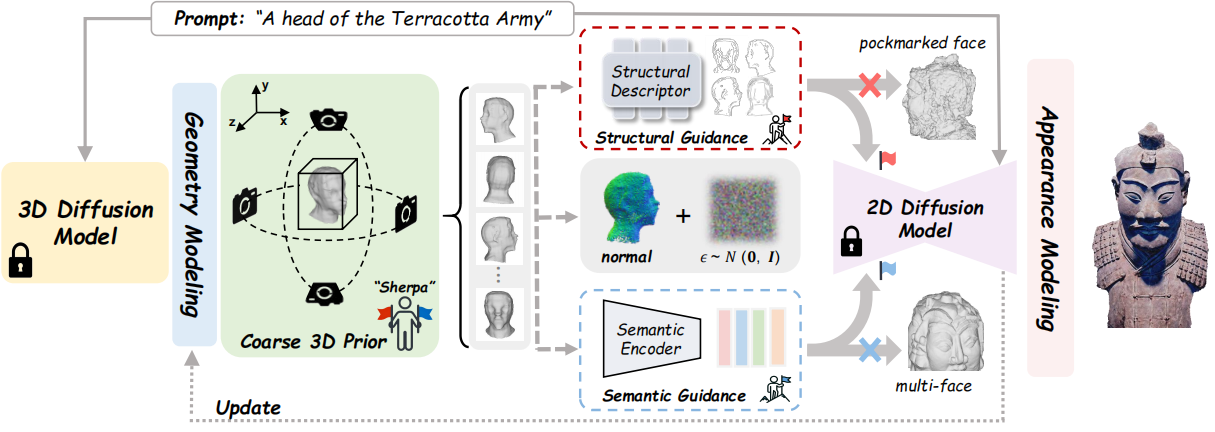Abstract
Recently, 3D content creation from text prompts has demonstrated remarkable progress by utilizing 2D and 3D diffusion models. While 3D diffusion models ensure great multi-view consistency, their ability to generate high-quality and diverse 3D assets is hindered by the limited 3D data. In contrast, 2D diffusion models find a distillation approach that achieves excellent generalization and rich details without any 3D data. However, 2D lifting methods suffer from inherent view-agnostic ambiguity thereby leading to serious multi-face Janus issues, where text prompts fail to provide sufficient guidance to learn coherent 3D results. Instead of retraining a costly viewpoint-aware model, we study how to fully exploit easily accessible coarse 3D knowledge to enhance the prompts and guide 2D lifting optimization for refinement. In this paper, we propose Sherpa3D, a new text-to-3D framework that achieves high-fidelity, generalizability, and geometric consistency simultaneously. Specifically, we design a pair of guiding strategies derived from the coarse 3D prior generated by the 3D diffusion model: a structural guidance for geometric fidelity and a semantic guidance for 3D coherence. Employing the two types of guidance, the 2D diffusion model enriches the 3D content with diversified and high-quality results. Extensive experiments show the superiority of our Sherpa3D over the state-of-the-art text-to-3D methods in terms of quality and 3D consistency.

Figure 1. Gallery of Sherpa3D: Blender rendering for various textured meshes from Sherpa3D, which is able to generate high-fidelity, diverse, and multi-view consistent 3D contents with input text prompts. Our method is also compatible with popular graphics engines.
